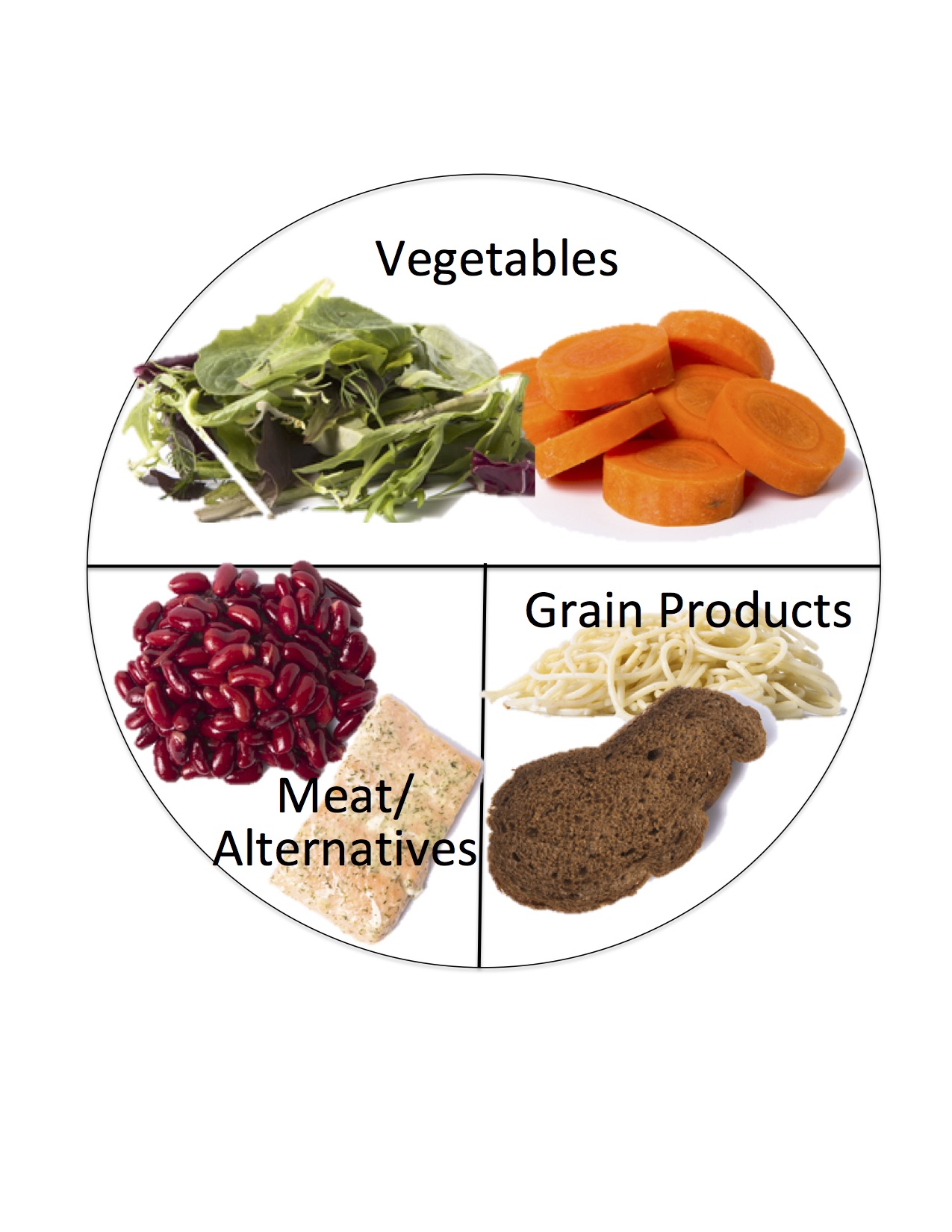Habits can be established at a very young age. Therefore, it is very important that parents ensure their children eat a well balanced diet and are physically active. Parents should set good examples for their children by living well themselves.
Here are steps that you can take to get started:
1. Take your kids grocery shopping and involve them in meal preparation.
Grocery shopping can be a fun activity for kids. When you take them grocery shopping, you give kids the option to make choices while you educate them on making healthier choices.
- Spend more time in the fresh produce department and encourage fruits and vegetables
- Choose whole grain products high in fibre (>4 grams per serving)
- Choose lower fat dairy (e.g. 1% or 2% milk and yogurt)
- Avoid purchasing sugary drinks including soft drinks, juice
- Shop for healthy fats such as vegetable oils (e.g. olive, sesame) and avocados
- Read labels to choose cereals that are lower in added sugar
- Avoid frozen meals as they are usually high in salt and lack nutrients
Allow your child to participate in food preparation. Ensure that you create a safe environment in the kitchen and offer activities that your child is able to perform. You can read more here.

2. Eat meals at the table as a family.
Whenever possible, enjoy meals with your family by sitting at the table and taking the time to enjoy your food. Ensure that the meals are balanced. You can follow the plate model by filling half of your plate with vegetables, one quarter with meat and alternatives, and the other quarter with grain products.
Here are some recipe ideas to prepare attractive healthy meals for children.
3. Serve daily breakfast
Starting the day with a well balanced breakfast can help your children start their day with energy and perform better at school. A balanced breakfast includes a whole grain, dairy and fruit. Consider the following:
- whole grain cereals with milk and a fruit
- whole grain toast with eggs and a fruit
- fruit and yogurt parfait
- oatmeal with berries and honey
- whole grain bread with nut butter and a fruit

If you are on the go consider making nutritious smoothies with yogurt and fruit or pack a homemade bran muffin with milk.
Here are some breakfast recipe ideas.
4. Plan and pack health meals and snacks
The lunch offered at school cafeteria often lacks nutrients and is high in fat and sugar. Ensure that you pack a healthy and attractive lunch for your child. Try the following:
- Variety of sandwiches (e.g. tuna, egg, chicken)
- Stew or chilli
- Salad with pasta, rice or barley and colourful vegetables
- Homemade pizza loaded with vegetables
- leftovers from the night before!
Avoid offering sugary fruit drinks or pop. Instead, provide water and a piece of fruit. Pack nutritious snacks such as:
- nuts and dried fruits
- fruit with a yogurt dip
- vegetables with hummus
- whole grain crackers and cheese
- fruit and yogurt parfait
5. Ensure a healthy food environment.
If healthier options are more accessible to children, they’re more likely to choose them. Consider having a fruit bowl available to make it easy for kids to access them. Avoid purchasing cookies, candies and chips; if they are not available, kids will choose healthier snacks (of course, make them available in moderation!). Keep healthy ready to eat snacks in the fridge such as cut vegetables, milk, cheese and yogurt.
6. Let your child decide how much they can eat.
While it is your responsibility to offer healthy meals and snacks regularly, it is up to your child to decide how much they need to eat. Teach your children to listen to the sense of hunger and fullness and eat accordingly. Avoid pressuring your child to finish the plated portion. To help your child eat mindfully, turn off TV, computer and phone to avoid distraction.
Lastly…
STAY PHYSICALLY ACTIVE!
Encourage your child to play outdoors. Participate in fun activities that your child enjoys such as bike riding, walking in a park, playing ball, and swimming!
Reference:
Dietitians of Canada. (2014, November 26). Healthy Eating for Children Aged 4-11 – Dietitians of Canada. Retrieved from https://www.dietitians.ca/Your-Health/Nutrition-A-Z/Toddlers/Healthy-Eating-for-Children-Aged-4-11.aspx
